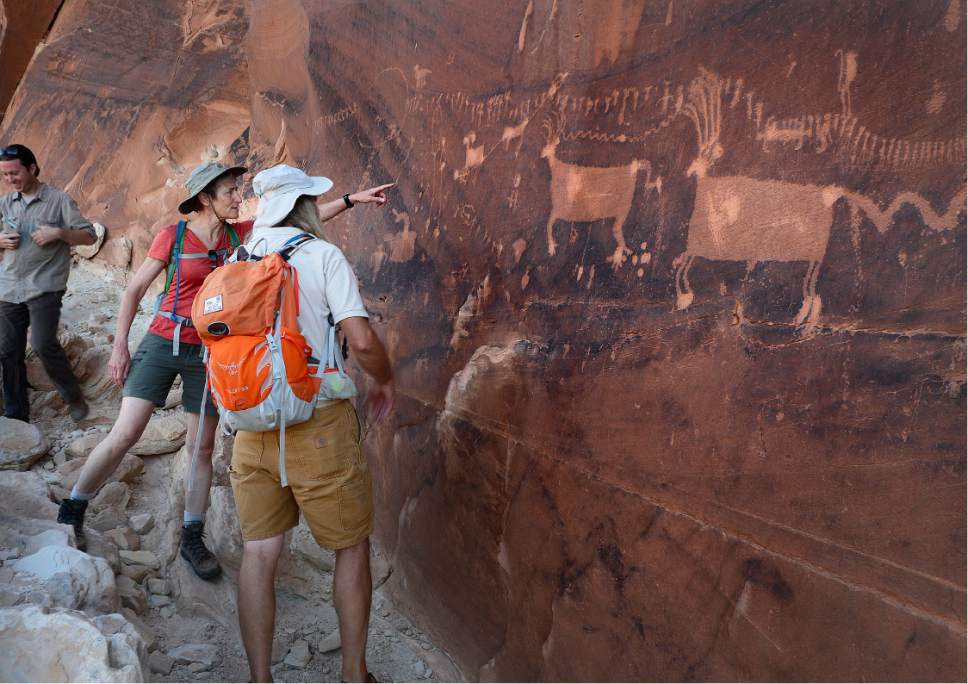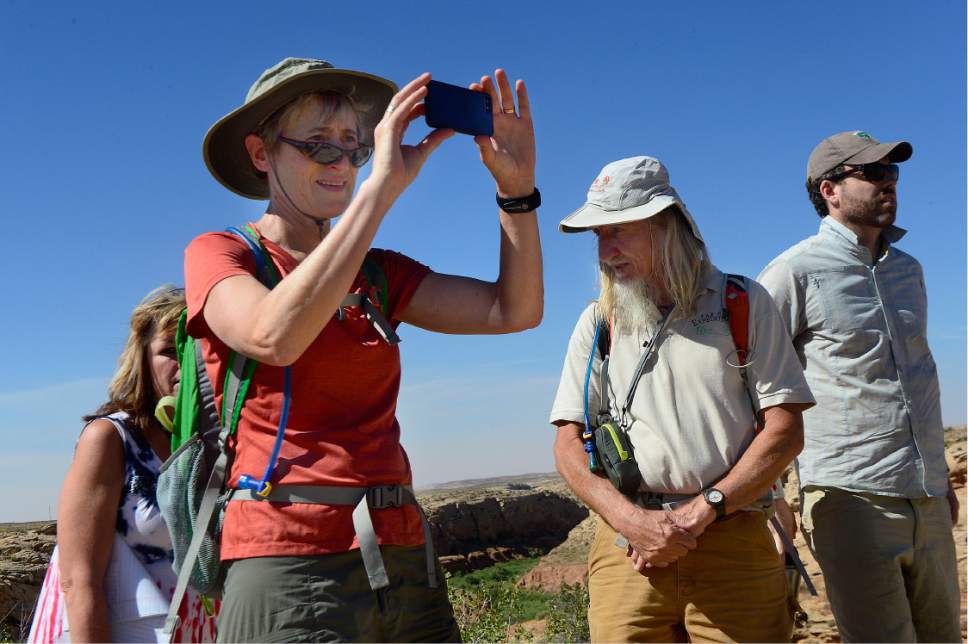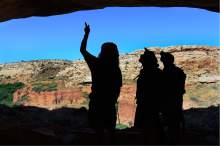This is an archived article that was published on sltrib.com in 2016, and information in the article may be outdated. It is provided only for personal research purposes and may not be reprinted.
State-owned parcels with world-class scenery and great opportunities for big-game hunting go on the auction block later this month.
For a minimum bid of $830,000, you could be the owner of a 640-acre trust lands section on the south slope of Diamond Mountain, an area teeming with deer and elk in the highlands overlooking the Ashley Valley northeast of Vernal. The property is among 12 parcels totaling more than 3,700 acres that Utah's School and Institutional Trust Lands Administration will auction Oct. 19. It will be the agency's largest twice-yearly auction since the 2008 real estate crash.
"We are trying to take advantage of economic conditions improving," said SITLA's associate director, Kim Christy.
But some sportsman groups are fighting the sale, saying it is a further "erosion" of public access to Utah's prime hunting grounds.
"Sportsmen in Utah pay a premium to hunt these lands through license fees," said Jay Banta, chairman of Backcountry Hunters and Anglers' (BHA) Utah chapter. "These are popular areas used by sportsmen who don't have the money to hunt on private reserves."
On Thursday, the group posted an online petition calling on SITLA to reconsider the sale.
The agency manages 3 million acres scattered around the state, mostly in mile-square sections. Its mission is to optimize revenues off these lands, which are deposited in an endowment that supports public schools. The last auction netted $3.7 million.
"There is an intersection between profiteering and doing the right thing for the people of Utah," Banta said.
Hunting, however, is not the key issue with the most controversial parcel on the block — a property spanning the southern tip of Comb Ridge, which a nonprofit pioneer heritage group hopes to acquire.
The Hole in the Rock Foundation stages treks that re-create the experience of the 1879 expedition down the Hole-in-the-Rock Trail that led to the Mormon settlement of San Juan County. The parcel is located west of Bluff on State Route 163 inside the proposed Bears Ears National Monument. Critics fear that the sale would create a private in-holding within a place treasured for its scenery and enable development where conservation should be the priority. Under SITLA's land-sale rules, there is no guarantee that Hole in the Rock Foundation would wind up with the property, leaving open the possibility that speculative buyers could acquire it for future development.
In response to objections, which came largely from conservationists and locals who use this land to access the ridge, SITLA pared back the proposed sale from the usual 640-acre section to 391 acres covering only part of the east side of Comb Ridge. The minimum bid is $284,000, or less than $1,000 an acre.
Another potentially controversial parcel is a 200-acre lot, known as Cave Valley, abutting Zion National Park on the Kolob Mountain Road north of Virgin.
This road weaves in and out of the park along its western boundary and is already seeing some development. This side of the park is encumbered with numerous private in-holdings, one of which has a rarely used gated mansion.
Privatizing neighboring lands could increase development pressure on these in-holdings, said Cory MacNulty of the National Parks Conservation Association.
"We are talking with our partners to see if there is a conservation buyer for this property," MacNulty said.
But it won't come cheap. The minimum bid is $860,000, making this parcel the most valuable among those to be sold this month.
This land is zoned "open space conservation and agricultural," which imposes a 20-acre minimum per building, should the land be developed. As with most trust lands sales, SITLA retains the minerals.
Also on the block is a 272-acre parcel Utah State University owns in Indian Canyon, northeast of Helper. The site includes warehouses, offices and manufacturing facilities once used for mine education programs at the College of Eastern Utah, which is now part of Utah State. The land and four buildings, built in the 1970s and totaling 52,000 square feet, appraised for $840,000, yet USU declined to disclose a minimum acceptable bid.
Buyers are required to submit sealed bids, which are opened at the auction scheduled for 10 a.m. Oct. 19 at the Little America hotel in Salt Lake City. Three highest bidders are invited to participate in oral bidding, along with any bidders whose sealed bids came within 80 percent of the third-highest bid.
The largest pieces on sale this month are prized for their access to big game. In Carbon County, SITLA is selling pieces in Spring Canyon, northwest of Helper, and Patmos Ridge, east of Wellington.
The two parcels on Diamond Mountain are also near state wildlife management areas and inside limited-entry hunting units for both buck deer and bull elk.
These sections are highly valued by backcountry hunters because of their remoteness and exceptional wildlife values.
BHA member Ivan James recalled hunting one these sections where he spooked nine mule deer. Yet the area was so dense with game that his stalk was hardly over even after those animals bolted off the section.
"I still had three more stalks that evening," he said, "and more deer were there or entering the section when legal shooting hours were over."
Brian Maffly covers public lands for The Salt Lake Tribune. Maffly can be reached at bmaffly@sltrib.com or 801-257-8713. Twitter: @brianmaffly







